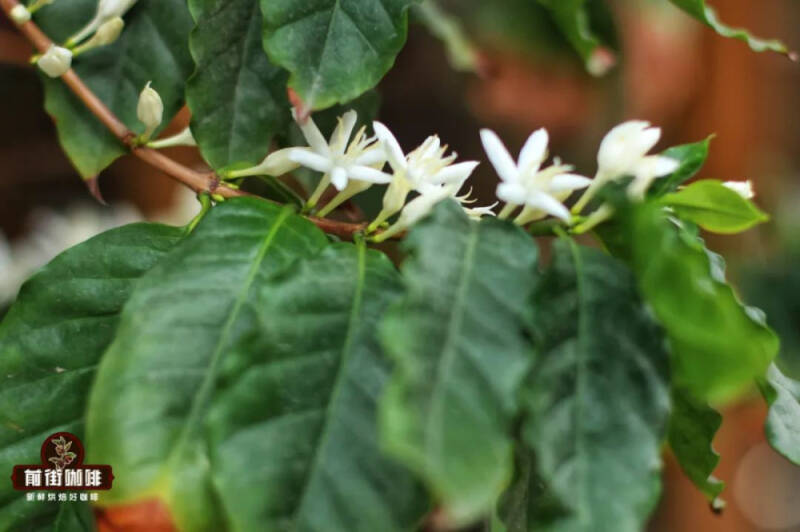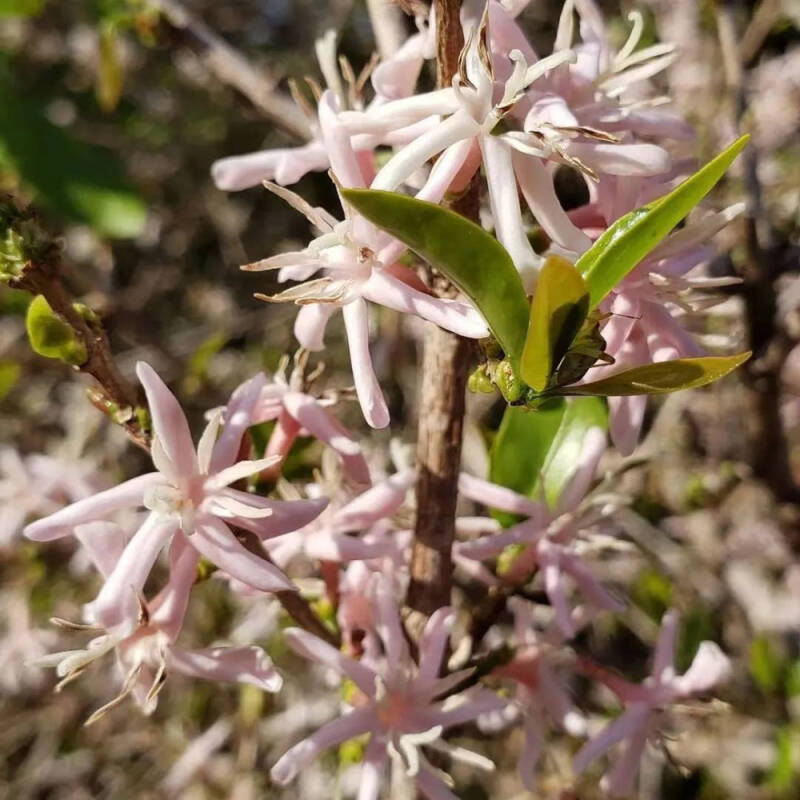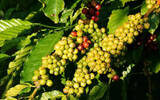There are pink coffee flowers! What's the difference between it and white coffee flowers?
For millions of farmers around the world, as long as the coffee trees begin to bloom in clusters of fragrant white flowers, it means that the season is about to enter the harvest stage. The more luxuriant and dense the petals are, the more coffee fruit farmers can harvest.

In our past impression, coffee flowers are generally elegant and simple pure white, composed of 5-6 leaves, inflorescences arranged in clusters on twigs. Every year in February or March, the coffee trees next to Qianjie stores will blossom randomly, emitting a similar smell of jasmine, magnolia, thyme and other white flowers, which makes people feel relaxed and happy.
But did you know that in some rare cases, coffee trees also produce pink flowers? what is the reason for this difference?

In an interview with perfect daily grind, Oliveiro Guerreiro Filho, an expert in genetics and plant breeding at the Campinas Agricultural Research Institute in Brazil, said there would be a rare pink coffee tree, mainly consisting of two varieties.
One is caused by natural genetic variation in coffee plants, and studies have found that pink flowers are more likely to bloom in certain varieties, such as the natural low-cause variety Coffea racemosa and its hybrid offspring, Aramosa.
Rasmosa (also known as raceme coffee), native to southern Africa, is a coffee with very low natural caffeine content and one of the oldest varieties. It was first introduced to Brazil in 1954. Later, Campanas agricultural researchers hybridized it with Arabica and obtained the Alamosa variety through shape screening, which is currently grown only in some small estates in Brazil.
The average caffeine content of Arabica beans is about 1.2% Mel 1.6%, while that of Arabica coffee is only 0.7%. In turn, however, low-causal characteristics make coffee trees less resistant to pests, making it necessary for the variety to be planted at higher elevations. In the flowering season, Alamosa coffee trees produce rose-pink flowers and ripe fruits show purplish red.
Another coffee tree that produces clusters of pink flowers is called Purpurascens (purple leaves), which is caused by spontaneous mutations in the DNA sequence of plant chromosomes. Gene expression determines the color of the whole plant. The tender leaves, new stems and stipules of Purpurascens coffee trees are purple, while coffee flowers are beautiful pink. Coffee trees with Purpurascens mutants tend to have lower yields and are more vulnerable to pests, the researchers said.
For example, the landowner from El Socorro, Guatemala, discovered the purple leaves and pink flowers of Purpurascens coffee in his own Maraka Maracaturra seedlings in 2009, and then cultivated them separately. After the harvest, they felt that the mutant performed very well in the cup test, with blackcurrant and ripe plum acidity, so they used grafting technology to grow it commercially and won several subsequent Guatemala Excellence Cup awards.
Most coffee growers may never see pink flowers on coffee trees, or they may never touch them. But as producers and researchers continue to develop hybrids, we may see more coffee plants with pink flowers in the near future.
-END-
Front Street Cafe
No. 10 Baoqian street, Yandun road, Dongshankou, Yuexiu district, Guangzhou, Guangdong province
Important Notice :
前街咖啡 FrontStreet Coffee has moved to new addredd:
FrontStreet Coffee Address: 315,Donghua East Road,GuangZhou
Tel:020 38364473
- Prev

Local coffee prices in Vietnam are rising again, and the Red Sea problem may escalate.
Recently, according to the Vietnam Coffee and Cocoa Association, the price of coffee in Vietnam has risen sharply. In the international market, the price of robusta coffee delivered in May 2024 rose to $3450 per ton, while the price of Arabica coffee fell to 182.95 cents per pound, but the price of coffee in Vietnam rose further.
- Next

What is the Q-Grader in the coffee? Is it worth taking the exam? How much does it cost?
There is always a group of people who get code names for calling themselves because of the particularity of their profession. Even coffee, which does not seem to be a vast field, also has such a profession. After the concept of boutique coffee was put forward, in order to distinguish the quality of beans, people specially added a scoring mechanism.
Related
- Why does hot American coffee taste bitter? Difference in proportional concentration between hot American and ice American
- Is espresso stored overnight in the refrigerator harmful to your body? Is frozen coffee better than freshly ground coffee?
- What parameters and proportions of water temperature should be used to grind and brew fresh coffee beans? Why can't I drink freshly roasted coffee right away?
- Customers have "changed" Manner's new products! Shop assistant: Please don't mess around!
- Remove sockets in customer areas at Starbucks stores?! Netizen: I won't go if I really tear it down
- What is the difference between the taste steps of sun-dried coffee and washed coffee? Why is sun-cured coffee sweeter and washed coffee sour?
- The recipe for salty grapefruit dirty is revealed! Coffee Festival salty grapefruit dirty coffee making materials parameters ratio milk share!
- How about the flavor of Sunlight 74158 at Sidamo Banshaha Mathieu Processing Factory in Ethiopia? 74158 Share the proportion of coffee brewing parameters!
- What effect does Italian American coffee with filter paper have? Will coffee taste better if it is put on filter paper at the bottom of the powder bowl?
- What is the color difference in coffee beans? What are the characteristics of honey processed coffee beans? Why are the anaerobically treated coffee beans uneven in color?

